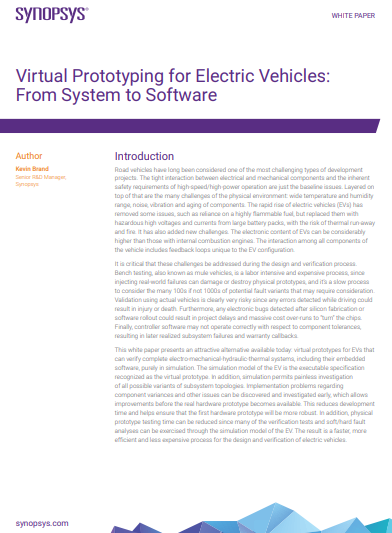[White Paper] Virtual Prototyping for Electric Vehicles: From System to Software

Overview
The rapid growth of the electric vehicle (EV) market has introduced new challenges for developers,including optimizing performance, efficiency, and cost while addressing complex system-level integration and cybersecurity concerns. Traditional development methods relying on physical prototypes and late-stage testing are no longer sufficient. To stay competitive, EV manufacturers need to adopt virtual prototyping to accelerate development, reduce costs, and ensure robust system and software validation.
Key Takeaways:
Accelerate Development: Start design and verification earlier in the project timeline, even before hardware or silicon is available.
Optimize Performance and Cost: Use virtual prototypes to explore design tradeoffs for performance, efficiency, and cost.
Enhance Safety and Reliability: Test faults, corner cases, and ISO 26262 safety compliance in a virtual environment without risking physical hardware.
Streamline Collaboration: Scale virtual prototypes across global teams, enabling 24/7 access and increased testing throughput.
Comprehensive Simulation: Leverage Synopsys’ unified solution stack, including SaberRD, Silver, Virtualizer™, and TestWeaver®, for system-to-software development.
You Should Read This If You Are:
- A system architect designing EV systems and exploring tradeoffs in performance, efficiency, and cost.
- A software or firmware developer working on embedded systems for EVs.
- A functional safety or reliability engineer ensuring compliance with ISO 26262 and other safety standards.
- A power electronics or battery management engineer optimizing EV performance and energy efficiency.
- A technology leader seeking to reduce time to market and improve development efficiency in the competitive EV sector.
